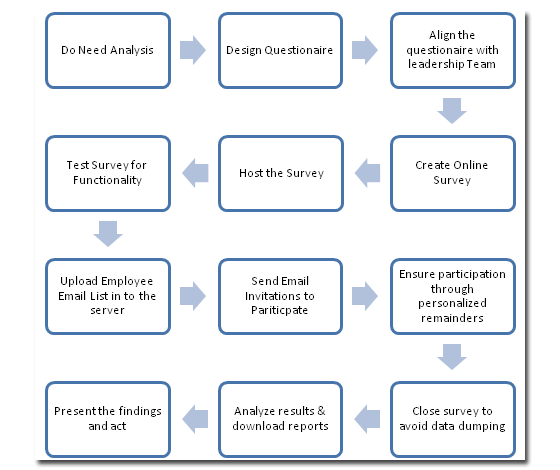The Organizational Attitude Survey is a crucial component of HR management program.
The Organizational Attitude Survey allows businesses to measure the gaps between employee perceptions of the organization’s reality and its desired position in several key organizational climate elements. Employee feedback helps create a framework for developing a solid action plan to address employee morale and the overall organizational effectiveness.
The survey helps organizations link HR initiatives with business results. It allows organizational management to set improvement targets for HR measures and integrate them into the balanced scorecard system.
Effective HR management is critical to the organization’s performance. Employee opinions can impact financial results by affecting customer retention, quality of work, morale, and productivity. Understanding HR drivers in the organization helps increase the engagement level of its personnel. This feedback allows organizational management to facilitate development and organizational change, increase its awareness of employee problems and internal health of the organization, and measure the effectiveness of current programs and policies. Besides, it can be used to motivate employees and improve job satisfaction.
Most organizations have various programs and systems in place focusing on the knowledge, skills and motivation of the individual performer. Organizational Attitude Surveys is an essential component of this approach. It can be used to solicit employee opinions on a variety of issues, including the organization’s success in communicating its mission to employees, as well as local issues such as quality of the working environment.
The Organizational Attitude Survey usually includes the following issues: employee satisfaction, senior management attitude, interpersonal relations, expertise, compensation, innovations, communication, teamwork, customer service, adaptability, staff development, etc. It helps enhance management/employee relations, evaluate training efficiency and current training needs, assess organizational climate and employee satisfaction. For more on HR productivity measurements, see The Top 10 Tips to Measure HR Productivity.
